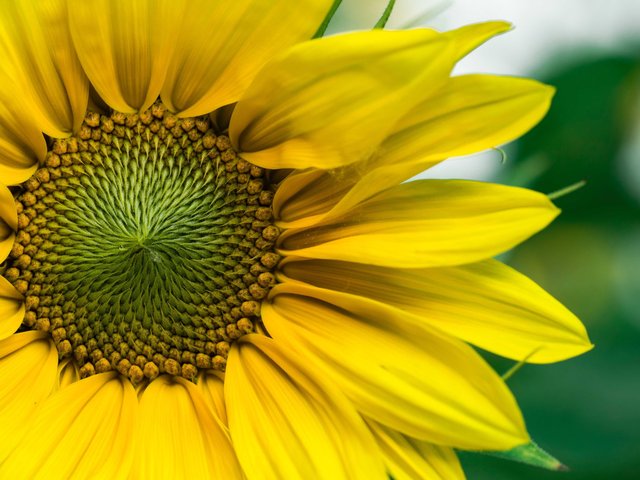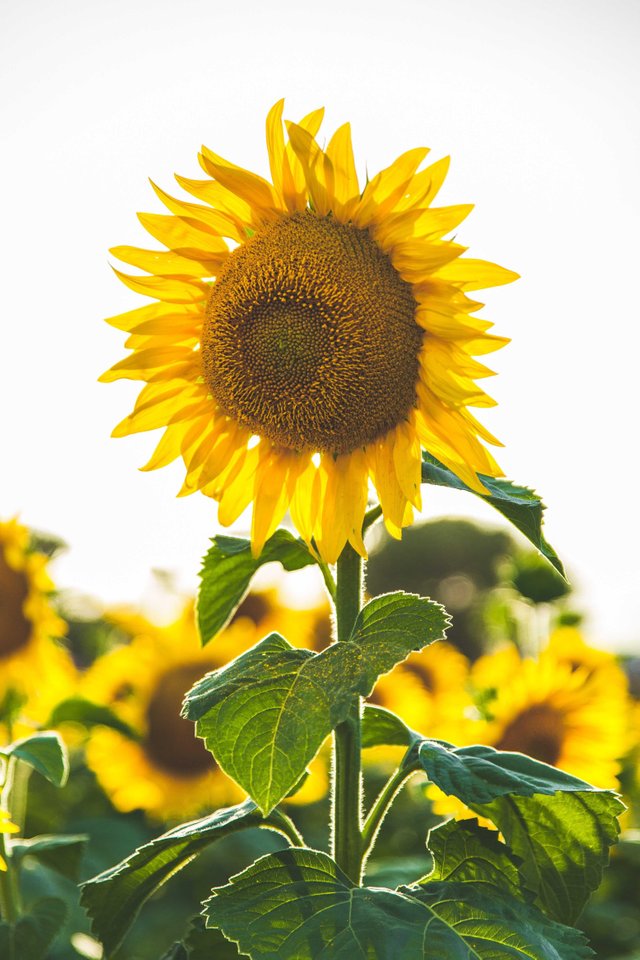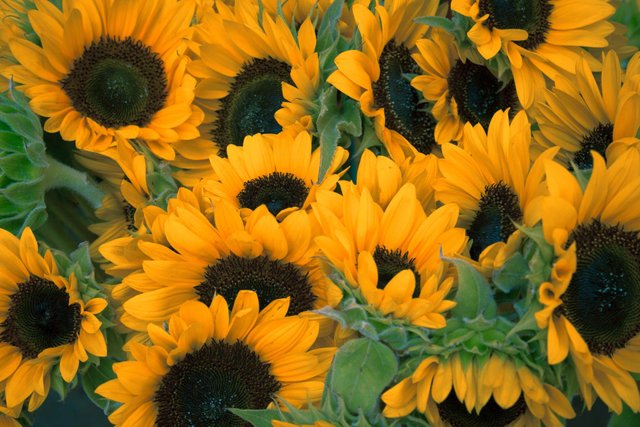**10 Glorious Facts About Sunflowers**

Sunflowers, in all their colourful glory, are a happy sight to behold - but there's more to their nature than just beauty. The multipurpose plants deliver healthy snacks, useful oil, and birdseeds. Let your garden knowledge flourish with these facts about Helianthus Annus
1. THEY ARE NATIVE TO AMERICAS
Like potatoes, tomatoes and corn, the cheerful plants didn't originate in Europe. They were cultivated in North America as far back as 3000 BCE, when they were developed for food, medicine, dye and oil. Then, they were exported to the rest of the world by Spanish conquistadors around 1500.
2. THEY WERE BROUGHT TO RUSSIA BY ROYALTY.
Tsar Peter the Great was so fascinated by the sunny flowers he saw in the Netherlands that he took some back to Russia. They became popular when the people discovered that sunflower seed was not banned during Lent, unlike the other oils the Russian Orthodox Church banned its patrons from consuming. By the 19th century, the country was planting two million acres of sunflowers every year.
3. THEIR POPULARLITY STANDS THE TEST OF TIME.
Russian immigrants to the United States in the 19th century brought back highly developed sunflower seeds that grew bigger blooms, and sparked a renewed interest I'm the native American plant. Later, American sunflower production exploded when Missouri farmers began producing sunflower oil in 1946, when Canada unveiled a mechanical seed-crishing plant, and in the 1970s, when consumers looked for low-cholesterol alternatives to animal fats.
4. THEY NEED A LOT OF RAYS AND ROOM.
The flowers not only look like the sun, they need a lot of it. They grow best with about six to eight hours a day but more is even better. They can grow as far as 16 feet, although many varieties have been developed to thrive at different heights. Flowers planted too close together will compete and not blossom to their full potential.
5. THEY TRACK THE SUN.
Sunflowers display a behavior called heliotropism. The flower buds and young blossoms will face east in the morning and follow the sun as the earth moves during the day. However, as the flowers get heavier during seed production, the stems will stiffen and the matured heads will generally remain facing east.

6. THE WORLD'S TALLEST SUNFLOWER REACHES 30 FEET AND 1 INCH.
In the summer of 2014, Veteran green thumb Hans-PeterSchiffer toppled the Guinness World Record for third year in a row. The local fire brigade lent its help in measuring the sunflower, which required its own scaffold.
7. THEY HAVE A STORY OF HEALING.
In Mexico, the flowers were thought to sooth chest pain. A number of Native American tribes agreed with the plant's curing properties. The Cherokee utilized an infusion of sunflowers leaves to treat kidneys while the Dakota brought it put to sooth chest pain and pulmanery troubles.
8. THEY HAVE TRAVELLED TO SPACE.
In 2012, the U.S. astronaut Don Petit brought along a few companions to the International Space Station: sunflower seeds. Petit regularly blogged about his budding friendship and shared photos of the gardening process.
9. THEY ARE ACTUALLY THOUSANDS OF TINY FLOWERS.
Each sunflower's head is made up of smaller flowers. The petals we see around the outside are called ray florets, and they cannot reproduce. But the disc florets in the middle, where the seeds develop, have both male and female organs, and each produce a seed. They can self pollinate or take pollen blown by the wind or transported by insects.
10. THEY CAN BE USED AS SCRUBBING PADS.
Once the flower heads are empty of seeds. They can be converted into disposable scrubbing pads for jobs too tough for your cleaning tools.
